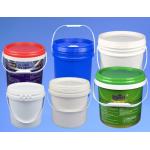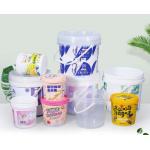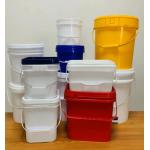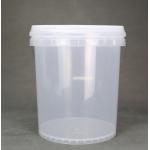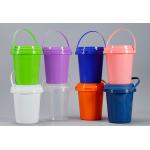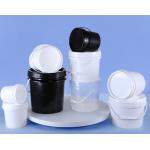Food Grade Bucket With Lid And Handle BPA Free Food ContainerProduct Description:Safe for food storage: Food grade buckets are specifically designed
and manufactured to be safe for storing food products. They are
made from materials that do not contain harmful chemicals or
contaminants that could leach into the food and cause health
issues. Meets industry standards: Food grade buckets must meet strict
industry standards for food safety and hygiene. They are often
labeled with a symbol or code that indicates their compliance with
these standards, such as the FDA (Food and Drug Administration) or NSF (National Sanitation
Foundation) mark. Airtight and secure: Food grade buckets are designed to be airtight
and secure, which helps to keep food fresh and prevent
contamination. They often come with a secure lid or seal that keeps
out air, moisture, and pests. Some food grade buckets also have a
gamma seal to make opening and closing the bucket easier.
Common Material for Plastic Buckets: There are specific materials that are commonly used to make food
grade buckets. These materials are approved by regulatory agencies
like the FDA for use in contact with food. Some common materials used for food
grade buckets include: High-Density Polyethylene (HDPE): HDPE is a type of plastic that is commonly used for food grade
buckets. It is lightweight, strong, and durable, and has excellent
chemical resistance. Polypropylene (PP): PP is another type of plastic that is often used for food
grade buckets. It is resistant to high temperatures and chemicals,
and is also lightweight and strong.
| Capacity | 2L | | Color | Color White or other | | Size | 15*13*14cm | | Material | PP | | Dimension | IML , Thermal transfer ,Screen printing | | Usage | Adhesive paint, latex, paint, etc. |
Packing: - PP bag packing;
- PP bag & Wevon bag packing;
The process of making a plastic food grade bucket: Material selection: The first step is to select the appropriate
materials for the bucket. Food grade buckets are typically made
from high-density polyethylene (HDPE) or polypropylene (PP)
plastics, which are approved for contact with food. Extrusion: The plastic pellets are melted and extruded through a
die to form a long, continuous plastic tube. Injection molding: The tube is cut into small pieces called "preforms," which are
then reheated and placed into a mold. The mold is closed and the
plastic is injected into the mold cavity under high pressure. Cooling and trimming: The mold is cooled and the plastic solidifies
to form the shape of the bucket. The excess plastic is trimmed off
the edges of the bucket. Finishing: The bucket may undergo additional finishing processes, such as printing, labeling, and quality control inspections. Testing and certification: The finished bucket is tested to ensure that it
meets food grade standards for safety and quality. The bucket may
be certified by regulatory agencies like the FDA or NSF to indicate its compliance with food safety regulations.
|
